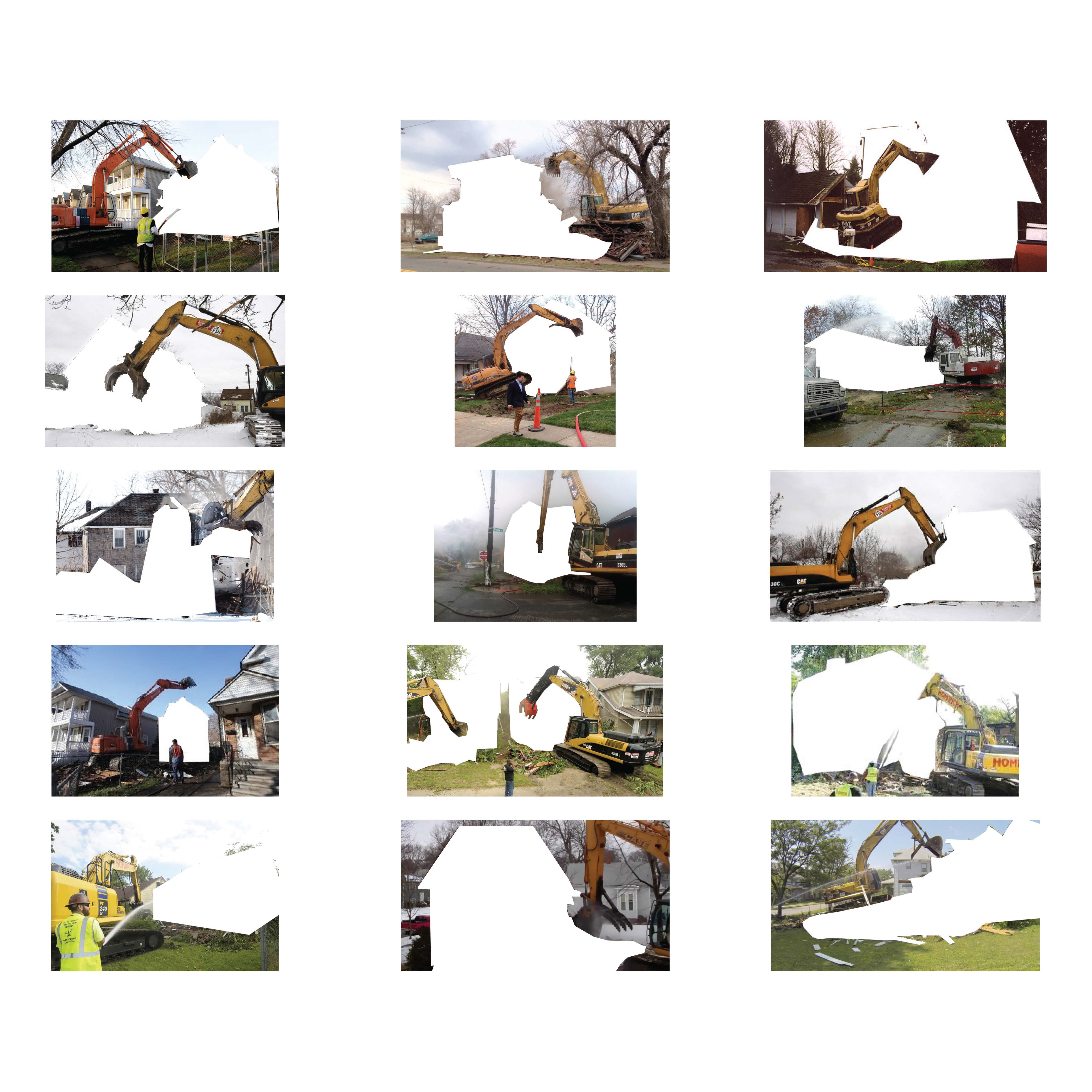Spatial Filler
Residue
by Jonathan Hanna, University of Michigan Taubman College, M.U.D. ’16
With every demolition, a celebration. With every abandoned home torn down, a neighborhood victory. As Luther Vandross said, ‘a chair is still a chair, even when there’s no one sittin’ there, but a chair is not a house and a house is not a home when there’s no one there to hold you tight.’ The character of communities is transformed overnight, from that of a dense fabric to a pastoral field of empty overgrown blocks strewn with the residue of lives come and gone. Detroit is thriving in many ways ¬as an entrepreneurial city, an arts hub, a music mecca, and a place of African American culture. While it is often represented as a city that has fallen from a peak of industry and glamour, for residents of Detroit this Rome-like narrative rings false. Yet, one cliche of Detroit is irrefutable: Detroit is full of empty houses. About 70,000 vacant houses, some dilapidated, some burnt almost to the ground, many just un-maintained. And inside these houses is stuff. Old appliances and furniture, garbage, old clothing and children’s toys. This stuff, this accumulation of grimy stuff, an impenetrable mass of stuffness, prevents the 20th century models of urban design from operating on the city. This residue, this ephemera of supposed infrastructure, is a constant reminder of times come and gone; a constant reminder that solutions for other cities do not fly in Detroit.

Photo montage of home demolition in Detroit. Part of Spatial Filler project by Jonathan Hanna.

Photo montage of home demolition in Detroit. Part of Spatial Filler project by Jonathan Hanna.